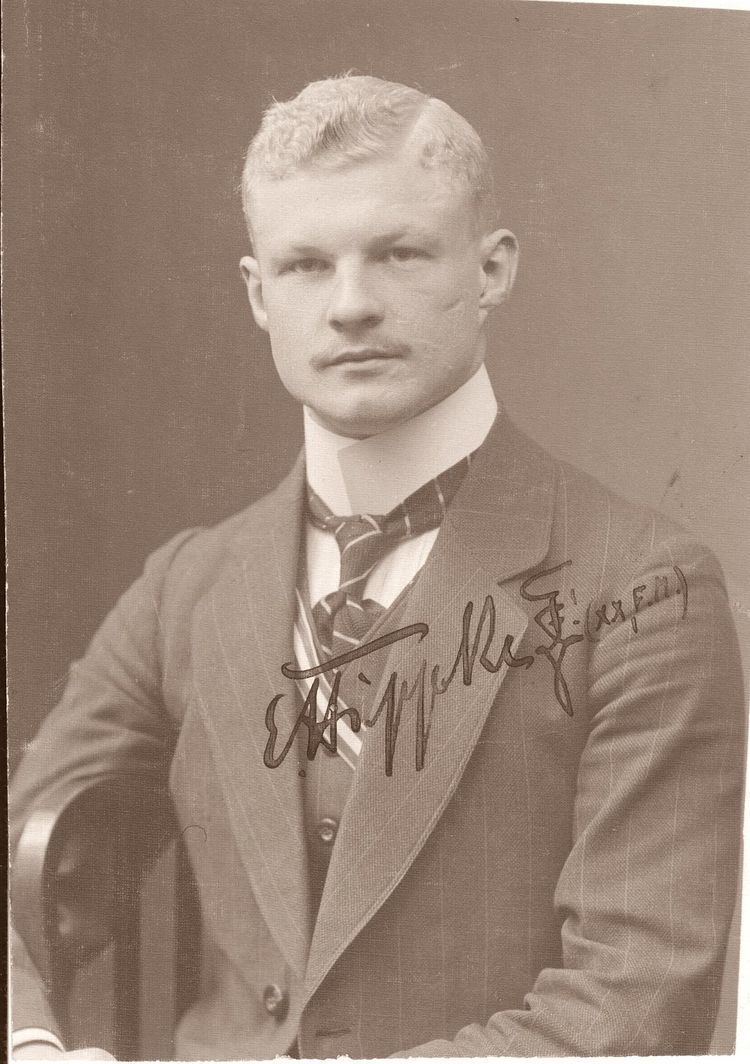Years of service 1907–1944 | Name Erich Hippke | |
 | ||
Battles/wars World War IEastern frontMacedonian FrontPalestine frontWorld War II Battles and wars Macedonian Front, Sinai and Palestine Campaign, World War II | ||
Prof. Dr.med. Erich Hippke (7 March 1888 in Prökuls – 10 June 1969 in Bonn) was a German Air Force General Surgeon with the rank of Generaloberstabsarzt. He is most noted as Chief Medical Officer of Luftwaffe and subsequent Inspector of the Medical Matters of Luftwaffe during World War II.
Contents
Early military career
Erich Hippke was born on March 7, 1888 in the town Prökuls, East Prussia. Young Erich intended to be a military doctor, thus he enrolled the elite Academy for military surgeons, Kaiser-Wilhelm-Akademie in Berlin. Also he had to join the German Army on April 1, 1907 and was officially assigned to the 4th Guard Infantry Regiment (4. Garde-Regiment zu Fuß) stationed in Berlin-Moabit.
During his senior years on the Academy, Hippke was commissioned Unterarzt (Officer candidate) on March 1, 1912 and assigned to Grenadier-Regiment 9. Hippke finally graduated on June 19, 1913 and served with his regiment in its garrisons in Stargard, Bromberg or Demmin. He was also promoted to the rank of Assistenzarzt (equal to Leutnant) on August 18, 1913.
With his new promotion, Hippke was transferred to the 54th Infantry Regiment "von der Goltz" (Infanterie-Regiment von der Goltz (7. Pommersches) Nr.54) stationed in Kolberg as Troop medic.
With the outbreak of World War I, his regiment was sent to the Eastern front as a part of 36th Reserve Division under the command of Generalleutnant Kurt Kruge. Hippke subsequently participated in the Battle of Gumbinnen and Battle of Tannenberg. In September 1915, he was transferred to the Division Staff and appointed Adjutant to the Division Surgeon. In this capacity, Hippke was promoted to the rank of Oberarzt (Oberleutnant) on October 13, 1915 and saw combat in Galicia.
In October 1916, Hippke was transferred to the Heeresgruppe Below under the command of General Otto von Below, and served on the Macedonian Front. Hippke spent almost year with this unit, before he was appointed Adjutant of the Army Surgeon within 11th Army under General Kuno von Steuben command.
In July 1917, Hippke was sent to the Palestine front, where he was assigned to the Staff of Heeresgruppe F under the command of General Erich von Falkenhayn. He was tasked again with the capacity of Adjutant of the Army Surgeon.
For his service during the War, Hippke was decorated with the both classes of Iron Cross, Prussian Red Cross Medal 3rd Class and Ottoman War Medal.
World War II
In the time of Nazi Germany, from 1937 to December 1943, Hippke was the Chief Medical Officer of Luftwaffe. He was also a member of the Board of Trustees of the Kaiser Wilhelm Institute for Brain Research. Hippke was the true source of the ideas for the so-called "freezing experiments" on behalf of the Luftwaffe, conducted at Dachau concentration camp by Sigmund Rascher.
He was succeeded by Oskar Schröder on May 15, 1944.
Life after War
He was arrested only in December 1946. By that time he was a general practitioner working in Hamburg, Germany. He avoided the Doctors' Trial and left Nuremberg without charge. He was never charged with a crime but American investigators of the Nazi medical atrocities later concluded that he was actually the source of the idea for those deadly experiments on humans.
